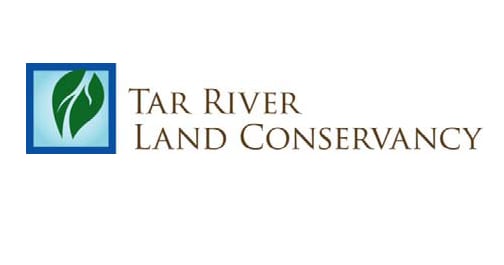Derek Halberg has been working with Tar River Land Conservancy for 18 years – not quite since its inception 22 years ago, but as executive director, he has witnessed a lot of growth in the area of land conservancy.
“We’ve done a lot of great work, and it’s very rewarding,” Halberg said.
TRLC, a nonprofit land trust, is one of a couple of dozen across the state with a similar mission to preserve – conserve – land for farm use or for future recreational use.
The group takes its name from the body of water that begins in Person County and continues Granville, Vance, Franklin and points farther east. The TRLC works in those and other counties as far away as Edgecombe County to help landowners find ways to conserve their property.
Halberg spoke with Bill Harris on Wednesday’s Town Talk to discuss some upcoming projects, one of which involves 83 acres in southern Granville County called Horseshoe Road Nature Preserve.
“It’s one of our newest properties that we’re actively working on to open to the public,” Halberg said. He said he hopes that a ribbon-cutting to officially open the property will take place in June.
When completed, the Horseshoe Road property will feature a couple of miles of hiking trails, much of which is being created with the help of volunteers. It will join Roberts Chapel Conservation Area in Stem to provide a place for hikers to come and get a little exercise while observing nature up close and personal.
TLRC has received some financial support from several local governments to help create the trails, signage and such for the Granville projects. And although using volunteers may take a little longer to complete a project, Halberg said that involvement will pay dividends in the long-run.
A project the size of Horseshoe Road may take a professional team a few months of continuous work to complete, but Halberg said TLRC’s approach was aimed at community involvement.j
“It takes longer, but it creates better results,” he noted. Volunteers have contributed more than 1,000 hours of their time, using rakes and shovels to put the trail through the woods, he said.
“We transform a property from a raw wilderness property into something that people can visit and enjoy.”
The Tar River and its tributaries provide water to reservoirs like Lake Holt in Creedmoor and Falls Lake in Wake County. Ensuring safe drinking water is a primary objective of the TLRC, but the group also works to protect the flora and fauna of the area – some of which “are found nowhere else on earth,” Halberg said.
There are fish, fresh-water mussels and amphibian species that dwell in and around the waters of the Tar and its tributaries that create a rich biological diversity in this part of the state, he said.
Unlike the Roanoke River to the north, from which Kerr Lake and Lake Gaston were formed, The Tar is still a free-flowing river, a fact that Halberg said makes it “pretty great for the wildlife.”
The TLRC is always looking to work with new landowners, he said. “We’re always looking to start new conversations,” he said.
Call the office, located in Louisburg, at 919.496.5902 or visit www.tarriverlandconservancy.com to learn more, from volunteering to participate in upcoming projects to ways to conserve properties.
Click Play!
